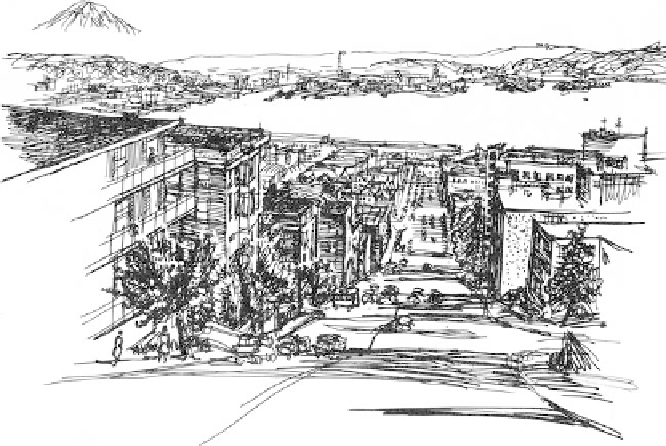Environmental Engineering Reference
In-Depth Information
Figure 6.1
A sketch from Victor Steinbrueck's Seattle Cityscape shows the relationship between the
built and natural environments in Seattle.
Source
: Steinbrueck 1962.
Participatory Planning and Growth Management
The participatory planning model that began as a grassroots effort in the
1970s would become the de facto approach to city planning in subsequent
decades. The so-called Seattle Way emphasized process, collaboration, and
consensus and was fueled by the strong support of a string of mayors,
including Charles Royer (1978-1989), Norm Rice (1990-1997), and Paul
Schell (1998-2001). These mayors institutionalized neighborhood power
and self-actualization by encouraging the creation of “little City Halls”
and directed signifi cant amounts of municipal funding to neighborhood
groups to undertake their own civic improvement projects.
17
This bottom-
up form of urban development is exemplifi ed by the City of Seattle's
Neighborhood Matching Fund Program, a successful program that has
doled out more than $45 million for over 3,800 community-executed
projects since it began in 1988.
18
In 1990, the state legislature passed the Growth Management Act to
address urban sprawl and the loss of rural lands and wilderness areas. The
state government was particularly concerned with the expansion of the

Search WWH ::

Custom Search